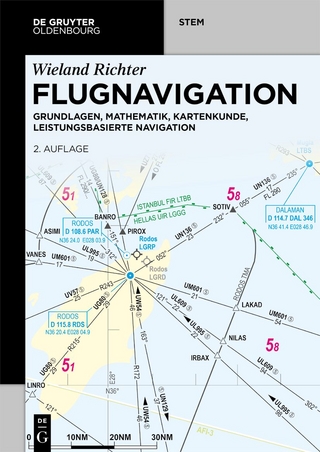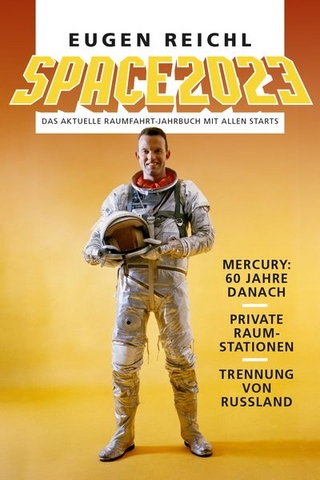
Präzisere Echtzeit-Flugsimulation kleiner Nutzflugzeuge durch Integration feingranularer Teilmodelle
am Beispiel der Aktuator- und Fahrwerksmodellierung
Seiten
2019
Universitätsverlag der TU Berlin
978-3-7983-3058-0 (ISBN)
Universitätsverlag der TU Berlin
978-3-7983-3058-0 (ISBN)
- Keine Verlagsinformationen verfügbar
- Artikel merken
Die Technologien und Anwendungsgebiete für UAV und kleine Nutzflugzeuge haben im zivilen Bereich in letzter Zeit eine rasante Entwicklung erfahren. Da der Betrieb dieser Systeme mit erheblichen Sicherheitsrisiken für den Luftverkehr verbunden ist, wird für die Soft- und Hardwareentwicklung der erforderlichen komplexen und sicherheitskritischen Avioniksysteme ein Prozess benötigt, der eine vergleichbare Zuverlässigkeit wie die für die Entwicklung von CS-25-Flugzeugen gebräuchlichen Methoden bietet. Dafür werden detaillierte, aber dennoch echtzeitfähige Simulationsmodelle benötigt, die die spezifischen Besonderheiten dieser kleineren Luftfahrzeuge berücksichtigen, die häufig der CS-23-Kategorie zuzuordnen sind. Solche spezialisierten Modelle sind wegen des üblicherweise auf klassischen Nachweismethoden beruhenden Entwicklungsprozesses und der bisher geringen wirtschaftlichen Bedeutung dieser Flugzeugklasse kaum verfügbar. Die hierzu benötigten Modellierungsansätze haben sich auf Komponentenebene in anderen Anwendungsbereichen zwar prinzipiell etabliert, ihre Integration in eine systemdynamische Echtzeitflugsimulation ist aber in der Regel nicht trivial. Der wissenschaftliche Beitrag der Arbeit betrifft diesen Integrationsprozess und die damit verbundenen Herausforderungen und erforderlichen Maßnahmen, die neben einer effizienten Implementierung u.a. die Ableitung quasistationärer Ersatzmodelle für hochfrequente Teildynamiken und die effiziente numerische Behandlung unstetiger und nichtlinearer Phänomene betreffen. Dabei müssen spezifische Merkmale kleiner Nutzflugzeuge berücksichtigt werden, die eine direkte Übertragung entsprechender Modelle aus dem CS-25-Bereich oder militärischen Anwendungen ausschließen.
Ein Beispiel für die Simulation eines solchen Nutzflugzeuges stellt das flugmechanische Modell dar, das für das Motorsegelflugzeug STEMME S15 zur Entwicklung eines hochdynamischen, vollauthoritären automatischen Flugsteuerungssystems aufgebaut wurde. Das Modell zeichnet sich durch sehr detaillierte und feingranulare Ansätze bei der Modellierung verschiedener Teilsysteme (Aerodynamik, Triebwerk, Geländemodell, Fahrwerk, Aktuatorik, Sensorsysteme, etc.) aus, die im Rahmen eines Überblicks skizziert werden.
Eine detaillierte Darstellung aller Einzelheiten der Modellbildung und der Implementierung im Rahmen der Echtzeitsimulation erfolgt exemplarisch für die Aktuatorik und das Fahrwerk. Bei den eingesetzten Aktuatoren handelt es sich um rotatorische, elektromechanische Stellantriebe mit Wellgetriebe (HDT, Harmonic Drive Transmission), die über ein mechanisches Steuergestänge mit den Stellflächen verbunden sind. Das Fahrwerk ist als nicht einziehbares, gummibereiftes Dreibeinfahrwerk ausgeführt. Für die Stoßdämpfung werden neben der natürlichen Strukturelastizität Elastomerfederpakete eingesetzt. Die Bugradlenkung erfolgt mit Hilfe von Steuerseilen. Ein besonderes Augenmerk bei der Modellbildung liegt auf nichtlinearen Eigenschaften und Störeinflüssen des mechanischen Übertragungsweges, der Nachgiebigkeit der Ansteuerung sowie der Strukturelastizität und Seitenführungsdynamik des Fahrwerks. Diese Effekte können Verhalten und Leistungsfähigkeit des Regelungssystems maßgeblich beeinflussen. Für beide Teilsysteme wird die mathematische Modellbildung, die Implementierung und die Parameterbestimmung in einer Ausführlichkeit beschrieben, die die Ergebnisse für den Fachmann nachvollziehbar macht.
Die entwickelten Teilmodelle werden zunächst einzeln durch speziell darauf ausgelegte Experimente validiert. Anschließend wird die erfolgreiche Integration in die echtzeitfähige Gesamtsimulation anhand von ausgesuchten Fallstudien dokumentiert. Die gewählten Beispiele demonstrieren den Nutzen für den Entwicklungsprozess und die Relevanz der detaillierten Modellbildung. Abschließend werden die erreichten Ergebnisse zusammengefasst, Verbesserungspotentiale aufgezeigt und weiterführende Fragestellungen angesprochen. New civil applications for UAV and smaller utility aircrafts have been rapidly unclosed by recent advances in UAV-Technology. The operation of these systems implies a considerable safety risk. For the soft- and hardware development of the complex and safety critical avionic systems involved a process is required, which is able to guarantee a comparable reliability like methods used for the development of CS-25 aircraft. This calls for detailed, but still real time capable simulation models, which adequately account for the characteristics of these smaller aircraft typically attributed to the CS-23 category. Such models are rarely available yet, due to the still minor commercial relevance of this aircraft class, as well as the common development process, which primary relies on classical verification methods based on experimental and calculative evidence. The required modelling approaches on a component level are established in other applications. However, their integration into system dynamical real-time flight simulation is seldom trivial. The contribution of this work concerns this integration process. Challenges and methods are addressed, comprising not only an efficient implementation, but also the derivation of analogous quasi stationary models for higher frequency sub dynamics as well as numerical methods able to cope with discontinuous and nonlinear model behavior. Specific attributes of CS-23-type aircraft have to be considered though, impeding a direct reuse of equivalent models common for CS-25 and military aircrafts.
The flight mechanical model which has been established for the motor glider STEMME S15 in order to enable the development of a high bandwidth, full authority automatic flight control system can be considered as a representative example for the simulation of such small utility aircraft. The model is characterized by a high level of detail applied for the modelling of various subsystems (aerodynamics, power plant, ground model, landing gear, actuation and sensor systems, etc.) which will be outlined in a general overview.
The modelling approaches for the actuators and the landing gear as well as their implementation into the real time simulation will be exemplified in all detail. The actuators employed may be characterized as rotative electro mechanic servo motors equipped with a harmonic drive transmission (HDT). They are linked to the control surfaces by means of a mechanical control rod assembly. The undercarriage is designed as non-retractable tricycle gear with pneumatic rubber tires. Suspension is provided by elastomer pads in addition to the natural structural elasticity. Control cables are used to steer the nose gear. During modelling, special attention has been payed to the mechanical transmission path being prone to various nonlinear parasitic effects, as well as to the control weakness, structural elasticity and slippage characteristics of the landing gear. These effects may significantly influence the control system behavior and performance. The mathematical modelling approach, the implementation as well as the parameter determination is described in a level of detail allowing the results to be followed and reproduced by the experts.
The developed sub models will first be individually validated by experiments specifically designed for that purpose. Afterwards the successful implementation in the real-time flight simulation of the entire aircraft will be documented using selected case studies. These examples greatly demonstrate the benefit to the FCL/footnote{Flight Control Laws} development process as well as the relevance of the detailed modelling concepts chosen. Finally the achievements will be summarized and potential improvements as well as subsequent research topics will be identified.
Ein Beispiel für die Simulation eines solchen Nutzflugzeuges stellt das flugmechanische Modell dar, das für das Motorsegelflugzeug STEMME S15 zur Entwicklung eines hochdynamischen, vollauthoritären automatischen Flugsteuerungssystems aufgebaut wurde. Das Modell zeichnet sich durch sehr detaillierte und feingranulare Ansätze bei der Modellierung verschiedener Teilsysteme (Aerodynamik, Triebwerk, Geländemodell, Fahrwerk, Aktuatorik, Sensorsysteme, etc.) aus, die im Rahmen eines Überblicks skizziert werden.
Eine detaillierte Darstellung aller Einzelheiten der Modellbildung und der Implementierung im Rahmen der Echtzeitsimulation erfolgt exemplarisch für die Aktuatorik und das Fahrwerk. Bei den eingesetzten Aktuatoren handelt es sich um rotatorische, elektromechanische Stellantriebe mit Wellgetriebe (HDT, Harmonic Drive Transmission), die über ein mechanisches Steuergestänge mit den Stellflächen verbunden sind. Das Fahrwerk ist als nicht einziehbares, gummibereiftes Dreibeinfahrwerk ausgeführt. Für die Stoßdämpfung werden neben der natürlichen Strukturelastizität Elastomerfederpakete eingesetzt. Die Bugradlenkung erfolgt mit Hilfe von Steuerseilen. Ein besonderes Augenmerk bei der Modellbildung liegt auf nichtlinearen Eigenschaften und Störeinflüssen des mechanischen Übertragungsweges, der Nachgiebigkeit der Ansteuerung sowie der Strukturelastizität und Seitenführungsdynamik des Fahrwerks. Diese Effekte können Verhalten und Leistungsfähigkeit des Regelungssystems maßgeblich beeinflussen. Für beide Teilsysteme wird die mathematische Modellbildung, die Implementierung und die Parameterbestimmung in einer Ausführlichkeit beschrieben, die die Ergebnisse für den Fachmann nachvollziehbar macht.
Die entwickelten Teilmodelle werden zunächst einzeln durch speziell darauf ausgelegte Experimente validiert. Anschließend wird die erfolgreiche Integration in die echtzeitfähige Gesamtsimulation anhand von ausgesuchten Fallstudien dokumentiert. Die gewählten Beispiele demonstrieren den Nutzen für den Entwicklungsprozess und die Relevanz der detaillierten Modellbildung. Abschließend werden die erreichten Ergebnisse zusammengefasst, Verbesserungspotentiale aufgezeigt und weiterführende Fragestellungen angesprochen. New civil applications for UAV and smaller utility aircrafts have been rapidly unclosed by recent advances in UAV-Technology. The operation of these systems implies a considerable safety risk. For the soft- and hardware development of the complex and safety critical avionic systems involved a process is required, which is able to guarantee a comparable reliability like methods used for the development of CS-25 aircraft. This calls for detailed, but still real time capable simulation models, which adequately account for the characteristics of these smaller aircraft typically attributed to the CS-23 category. Such models are rarely available yet, due to the still minor commercial relevance of this aircraft class, as well as the common development process, which primary relies on classical verification methods based on experimental and calculative evidence. The required modelling approaches on a component level are established in other applications. However, their integration into system dynamical real-time flight simulation is seldom trivial. The contribution of this work concerns this integration process. Challenges and methods are addressed, comprising not only an efficient implementation, but also the derivation of analogous quasi stationary models for higher frequency sub dynamics as well as numerical methods able to cope with discontinuous and nonlinear model behavior. Specific attributes of CS-23-type aircraft have to be considered though, impeding a direct reuse of equivalent models common for CS-25 and military aircrafts.
The flight mechanical model which has been established for the motor glider STEMME S15 in order to enable the development of a high bandwidth, full authority automatic flight control system can be considered as a representative example for the simulation of such small utility aircraft. The model is characterized by a high level of detail applied for the modelling of various subsystems (aerodynamics, power plant, ground model, landing gear, actuation and sensor systems, etc.) which will be outlined in a general overview.
The modelling approaches for the actuators and the landing gear as well as their implementation into the real time simulation will be exemplified in all detail. The actuators employed may be characterized as rotative electro mechanic servo motors equipped with a harmonic drive transmission (HDT). They are linked to the control surfaces by means of a mechanical control rod assembly. The undercarriage is designed as non-retractable tricycle gear with pneumatic rubber tires. Suspension is provided by elastomer pads in addition to the natural structural elasticity. Control cables are used to steer the nose gear. During modelling, special attention has been payed to the mechanical transmission path being prone to various nonlinear parasitic effects, as well as to the control weakness, structural elasticity and slippage characteristics of the landing gear. These effects may significantly influence the control system behavior and performance. The mathematical modelling approach, the implementation as well as the parameter determination is described in a level of detail allowing the results to be followed and reproduced by the experts.
The developed sub models will first be individually validated by experiments specifically designed for that purpose. Afterwards the successful implementation in the real-time flight simulation of the entire aircraft will be documented using selected case studies. These examples greatly demonstrate the benefit to the FCL/footnote{Flight Control Laws} development process as well as the relevance of the detailed modelling concepts chosen. Finally the achievements will be summarized and potential improvements as well as subsequent research topics will be identified.
| Erscheinungsdatum | 18.09.2019 |
|---|---|
| Reihe/Serie | Institute of Aeronautics and Astronautics: Scientific Series ; 6 |
| Verlagsort | Berlin |
| Sprache | deutsch |
| Maße | 148 x 210 mm |
| Gewicht | 630 g |
| Themenwelt | Technik ► Luft- / Raumfahrttechnik |
| Technik ► Maschinenbau | |
| Technik ► Nachrichtentechnik | |
| Schlagworte | Actuator • Aktuator • Fahrwerk • Flight simulation • Flugsimulation • Kleinflugzeug • landing gear • Modellierung • Modelling • utility aircraft |
| ISBN-10 | 3-7983-3058-1 / 3798330581 |
| ISBN-13 | 978-3-7983-3058-0 / 9783798330580 |
| Zustand | Neuware |
| Haben Sie eine Frage zum Produkt? |
Mehr entdecken
aus dem Bereich
aus dem Bereich
Grundlagen, Mathematik, Kartenkunde, leistungsbasierte Navigation
Buch | Softcover (2022)
De Gruyter Oldenbourg (Verlag)
72,95 €
Das aktuelle Raumfahrt-Jahrbuch mit allen Starts
Buch | Softcover (2022)
Verein zur Förderung der Raumfahrt e.V. (Verlag)
18,90 €


